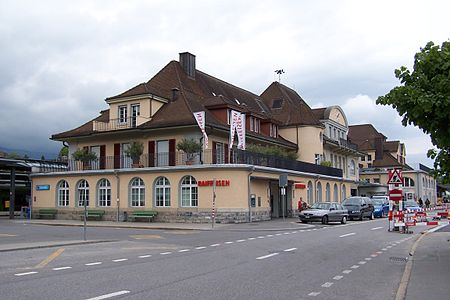Spiez railway station
BLS railway stationsPages with no open date in Infobox stationRailway stations in the canton of BernSpiezSwiss railway station stubs

Spiez is a railway station in the town of Spiez, in the Swiss canton of Bern. It is on the Thunersee line of the BLS AG, which connects Thun and Interlaken, and is the junction for the same company's busy Lötschberg line, as well as the Spiez-Erlenbach-Zweisimmen line.The station is served by various operators, including the BLS, Swiss Federal Railways, Deutsche Bahn.
Excerpt from the Wikipedia article Spiez railway station (License: CC BY-SA 3.0, Authors, Images).Spiez railway station
Bahnhofstrasse,
Geographical coordinates (GPS) Address Nearby Places Show on map
Geographical coordinates (GPS)
| Latitude | Longitude |
|---|---|
| N 46.686111111111 ° | E 7.68 ° |
Address
Bahnhofstrasse
3700
Bern, Switzerland
Open on Google Maps










